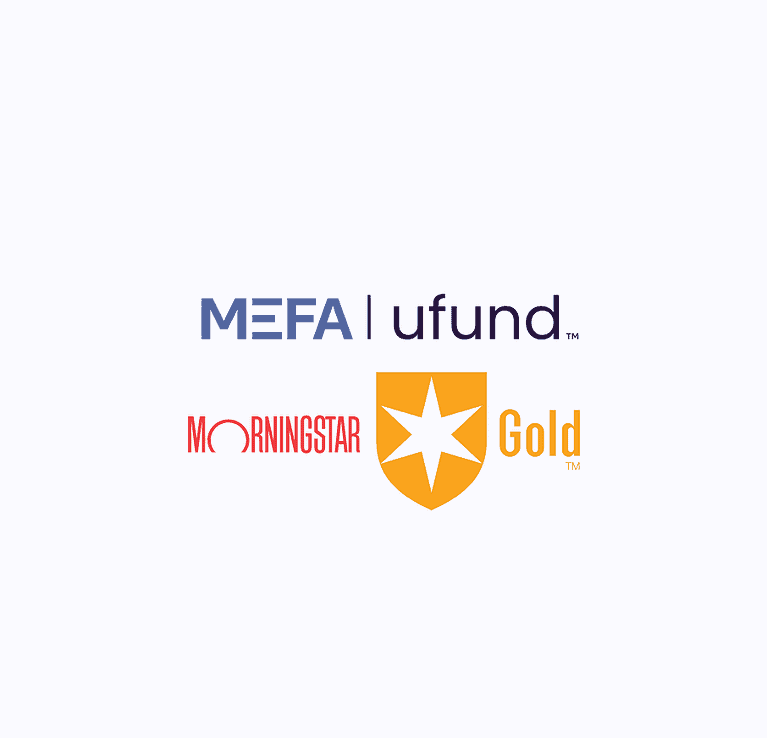This lesson provides a detailed overview of the state-based financial aid programs in Massachusetts and initiatives by the state of MA and Office of Student Financial Assistance (OSFA). This lesson includes a webinar presented by Alison Connolly and Robert Brun of OSFA.
Please note that this transcript was auto-generated. We apologize for any minor errors in spelling or grammar.
Julie Shields-Rutyna: [00:00:00] All right. Welcome everybody. Let me try to just share my few little slides here. Uh,
my name is Julie Shields and I am the senior Director of college planning education and training at MEFA. And I’d like to welcome you to our MEFA Institute webinar this morning, understanding Massachusetts State Financial Aid. And the way it will work is we have two terrific presenters, so they will present to you.
And if you have any questions during the presentation, please use the q and a section to put in your questions, and then we’ll leave a little time at the end and I’ll make sure that we are able to answer any questions you may have. But I’m sure it’s gonna be a lot of detail, a lot of thorough information.
So. Um, stick around as long as you can. If you do need to leave, um, we, this will be [00:01:00] recorded and we will send you the link to the recording and the slides and all of that so you’ll have it so you could share it with other colleagues who weren’t able to attend. And, um, you can also, if you want closed captioning, you can hit the live transcript button.
I think most of you know Mefa, but we have been around since 1982, uh, with our same mission of helping families plan, save and pay for college. And we have, uh, college savings plans. We have low cost loans and everything in between is free services and guidance for families, for school counselors, for college access professionals, and for college administrators.
Um, and in fact. Uh, the webinar today is part of the Mefa Institute, which is our professional development training series, and you can receive professional development points for attending these webinars, either live or after they’ve, they’ve been [00:02:00] recorded in the Mefa Institute section that’s within the counselor section of our website.
So please take advantage of all of these things. And here are just some other ways to connect with MEFA. Um, know that we have, um, you can sign up for our emails, which just puts you in touch with everything we have available, um, for counselors. We also have email sign up for your families and, um, if you want information about that, we have sent you information about that.
But if you want, um, a refresh, let us know and we’ll send you how, how your families can sign up for me for emails too. And just stay on top of. Everything related to planning, saving, and paying for college in a an age grade targeted way. And here are all the places you can connect with us on social media.
Um, also, uh, this is something that I, something sometimes people forget. Please know you can call us anytime or email us at college [email protected] anytime. And [00:03:00] we just, we wanna hear from you. We wanna know how we can be helping you better. So please take advantage of that. And I’m gonna end. My share, I think I’ve stopped sharing.
Is that right? Yes. And I’m gonna introduce our two terrific presenters today, both from sfa, uh, the Office of Student Financial Assistance. We have Robert Brun, who is the senior associate. Commissioner for student financial aid here in Massachusetts within the Department of Higher Education, and we have Alison Conley, who is assistant Commissioner of Student Financial Aid, also working at OSFA within the Department of Higher Education.
And I’m gonna turn it over to you too and you can share your screen and we’ll get going on all the wonderful news and state aid.
I hide myself too. [00:04:00]
Alison Connolly: Great. Thanks Julie.
Robert Brun: So welcome. Well thank you Julie, and good morning everyone. I’m gonna speak as loudly as I can because I am in competition with a ventilation system in a room that I am this morning. Uh, I am Robert Brown, as, uh, Julie mentioned, and you’ll have to forgive. The name tagging that shows Allison Connolly on your screen.
But, uh, uh, we both, uh, are here and very pleased to have this opportunity to speak to you about, uh, state financial aid programs and what’s been happening, uh, here at the state level to provide financial aid opportunities to student and families here in the Commonwealth. And, uh, obviously the Department of Higher Education has been very active working with the.
Massachusetts legislature to, uh, secure financial aid, uh, assistance for students here, uh, attending variety of [00:05:00] institutions, whether it’s, uh, private, public, uh, for-profit, so on and so forth. Uh, uh, about a year ago, the, uh, board of Higher Education adopted, uh, for priorities, uh, that really, uh, are guiding principles to our work here at the DHE.
Uh, it’s, uh, student success in financial aid. Economic mobility, public good innovation. Uh, obviously all of these four, uh, principles are, uh, finding ways, uh, in, uh, in our, uh, financial aid, uh, uh, operations and, uh, and the services that we provide to students. Obviously, we will have a good opportunity here this morning to talk to you about, uh, uh, the work we’ve done in financial aid.
And the success that we are hoping that our students are having here in Massachusetts. Let me turn, uh, the floor over to Allison Connelly right now. We’ll speak to you first and then I’ll return to, uh, cover some [00:06:00] stuff later. Thank you.
Alison Connolly: Great. Good morning everyone. Um, as Robert mentioned, we uh, have been expanding higher education’s reach in.
Massachusetts, um, through affordability, access, and outreach. And I just wanna speak to you for a moment on access by removing barriers, um, and the tuition equity. In Massachusetts, we have adopted the tuition equity law, uh, that carves a pathway to in-state tuition rates for certain non-US citizens, including undocumented students.
That have attended Massachusetts High School for at least three years and have earned a diploma or the equivalent of in Massachusetts. And because of this, we have created, what’s, what we’re calling the mafa, the Massachusetts application for state financial aid. It’s four students that, um, otherwise could not file a fafsa.
This launched in January of [00:07:00] 2024 for the 2324 academic year, and we are swiftly moving to put this into our mass aid system so that students will come to one system, whether you’ve filed a MASA or a fafsa, and see all of the state financial aid programs that you are eligible to receive. Um, the 26 27 mafa is set to launch later this month.
It will be again in that Mass aid system. Just a few numbers for you on how the Mafa application has increased, uh, over the last few years since it started in 2324. You can see that in. Last year in the 25 26 academic year, and this, these are numbers up to, I think last Friday, um, we have received over 2,574 completed applications.
So there’s that many more students that were able to help within the Commonwealth. [00:08:00] And this is just a graph of where those students in that first year, um, attended school and how much. They received in state financial aid. Um, again, we don’t quite yet have the numbers for last year. Uh, we’ll should have those in the next month or so.
But, uh, as you can see, these students have attended, uh, across the system throughout community colleges, state university, and the UMass system. Something that we have created this year, right on our website, uh, is a little wizard. So that students can determine if they are in fact eligible to file a FAFSA or if they should file the masa.
None of this information is saved anywhere. It’s just for informational purposes for the student. So they click, you know, if they have a social security number, if they are a US citizen or US National, or if they’re an [00:09:00] international student. Um. Sorry, I’m just trying to get to the next screen so I can show you the bottom part of this.
It tells them if they’ve, based on their responses, if they qualify for the FAFSA or the masa and a link to those, and then it tells them, um, the deadlines for applying for state financial aid in Massachusetts, which this year is June 30th. Another thing that you may have seen. Throughout Massachusetts as you’re driving up and down the highways.
Our, our new campaign go higher. Uh, this is throughout all of higher education in Massachusetts. It’s a push for students to get information and explore the free and affordable degree in certificate programs, um, across the colleges and universities. Uh, this, if you go to mass.gov. You’ll notice that this campaign [00:10:00] is very prominent on the website, and then it links over to our site for more information on additional financial aid programs.
So the Go Hire campaign is in full, uh, extent right now, and you’ll see those throughout the, the state. Um, but also the Wizard is up on our website for students to determine if they should be filing the Mafa or fafsa. And again, the Mafa will go live late this month. Let me just share these final numbers here for.
Uh, FAFSA completion data. This, uh, so in addition to that mafa numbers, we also, throughout Massachusetts have all these FAFSA completions, completers. Um, and it’s hard to see the bottom of the screen, but the total, again has increased. So we are back on the upswing of [00:11:00] having, uh, FAFSA completers throughout Massachusetts with your help at the high schools.
Um, 24, 25, there were over 298,000. And for this current academic year, we have, uh, just over 322,000. Students that we’ve received completed FAFs for. So now I will turn it back over to Robert as he continues to talk to you about the access and affordability for students.
Robert Brun: Thank you, Allison, and can move on to the next stream. So earlier, uh, I talked about the, uh, collaboration between, um, uh, our office here, the DHE legislature and others, uh, stakeholders in terms of, um, putting our efforts together to, uh, secure the funding that we need. So obviously we have, [00:12:00] uh, many thanks to, to give to our governor, uh, legislature and, and others that are.
Really very, uh, invested in seeing that, uh, uh, Massachusetts students have the best opportunity, uh, on our campuses to, uh, enroll, uh, persist and, uh, and finally, uh, complete their education
next. So the, the last two programs that have come about here in Massachusetts that really offer. Uh, free college, uh, at least at the tuition fee level are, uh, uh, both the mass reconnect and mass educate, uh, and free community college, uh, is really better known as a mass educate program, which, uh, was, uh, rolled out in award year 24, 25, just last year.
Uh, and it sorta, uh, becomes a system [00:13:00] program to amass, reconnect. Which, uh, uh, was rolled out the year before that in 23, 24. And really both with, uh, similar objectives of, uh, allowing students to enroll at our free community colleges and get tuition fees and book allowance, uh, free of charge. Obviously, these students have to complete the, either the free application, federal student Aid, fafsa, or.
The master application that Allison talked to you about a moment ago. Uh, but under either, uh, scenario, uh, these tools are having, uh, again, their costs fully met, uh, and, uh, there’s no, uh, uh, really, uh, um, need to, uh, for, for them to contribute towards this cost. The way it works is, uh, we look at tuition.
Fees and we subtract, uh, any, uh, non loan aid, any grant dollars who are available to the [00:14:00] students as first, um, dollars. And then whatever D difference remains, uh, is awarded to students, uh, under either Mastery Connect, mass Educate as Last Dollar. So again, these programs are, are SAI and, uh, regardless of, uh.
Uh, uh, student income or family income, they are eligible for these programs. Uh, again, these programs are, uh, designed to provide financial assistance to both full and part-time undergraduate students who are enrolled in pursuing an approved program and study. Uh, mass Educate, uh, allows the student to, uh, earn, uh, a maximum of two associate degrees for by mass reconnect.
Itself, uh, only allow students to, uh, receive funding for their first associate degree.
And again, uh, these programs, uh, both Mastery Connect, mass [00:15:00] Educate, serve Last Dollar, uh, financial assistance. And, uh, again, it ensures that these students have the opportunity to attend college, uh, at least at the community college level, uh, free of charge tuition and fee charges. Hopefully, we hope that by the time they complete the associate, they’ll transfer over to four year campus and complete their bachelor’s degree.
There’s also a book allowance that’s available to these students, uh, either under either Mass Reconnect, mass Educate. Uh, there’s also a second allowance on the Mass Educate that’s available to students. For additional, uh, cost they may incur, uh, while they enroll. Uh, and currently the, these allowances are, uh, maxed at $1,000.
Although there’s conversation, uh, at the less, you know, less legislature to augment that [00:16:00] to $1,200, which is what the maximum was last academic year. And the students have to be enrolled a minimum of six credit. Uh, again, uh, not any of our, uh, 15 community colleges.
Julie Shields-Rutyna: And, uh, Robert, can I ask one quick question about that? Um, only because I do get it a lot, and someone just asked this question. Sure. They’re wondering about students who came into their sophomore year late in high school here in Massachusetts and received credits. Um. I guess this is a little bit different, but, um, I do get this question a lot.
Um, if they would be considered, uh, able to complete the mafa?
Robert Brun: Uh, that’s a great question, Julie, and we, we too get that, uh, questions from, uh, the public. Uh, so under mass tuition equity [00:17:00] law, the students has to complete three years of, uh, uh, high schools in Massachusetts. Uh, however, it does not say that they have to be enrolled, uh, for a full year.
So the, to your question, they can enroll part of, uh, any of the three years and still be considered to having, uh, uh, enrolled, uh, for three years. So if they arrive in, at midpoint of either first, second, or third year, uh, they were still qualified to complete the master application.
Julie Shields-Rutyna: Thank you so much, and sorry to derail, but I realized you, you know, we already talked about the mass, but I just wanted to get that question answered for the person.
Thank you.
Robert Brun: Absolutely. Yeah. So again, uh, uh, uh, the, the book allowance is something that’s, uh, available to all students, uh, the sister program to both, uh, mass Educate, uh, and Mastery Connect. But at four year campuses, it’s Management Plus, and the [00:18:00] concept is pretty much the same. It allows students to receive tuition, uh, in fees, uh, free of charge.
Uh, o obviously it’s a much bigger ask. Uh, these four year campuses cost more in terms of, uh, tuition and fees, particularly in the arena, but there’s a commitment on part of the state to use the Master Plus program. Uh, to augment other form of aids that there may be eligible for, whether it’s Mass Grant, bell Grant, or any of the other grant dollars, uh, to make sure that in the end the student has sufficient, um, assistance to pay for tuition fees and a book allowance.
So Master Plus serves in the same capacity, uh, as, uh, do, uh, mastery Connect and Mass Educator. Four year sector, and that’s for both, uh, our nine state universities and a four undergraduate, uh, campuses of [00:19:00] UMass system. Uh, so obviously, um, commitment there. Uh, again, it’s, uh, these programs, uh, to serve, uh, as last dollar, uh, assistance.
Uh, again, uh, we make sure that, uh. Grant aid, uh, are, is available for, uh, towards the cost of tuition and fees and their whatever differences. Uh, it’s covered by, uh, uh, mass and plus on it four year campuses.
There’s also a mass grant plus expansion program, uh, which commits to provide. Up to one half of tuition and fees at, uh, uh, Massachusetts, uh, public campuses, four year public campuses. So we’re talking the nine nine state universities and University of [00:20:00] Massachusetts. Uh, there’s a threshold in terms of, uh, the SCI that, uh, uh, the student, uh, and the family, uh, would have to present.
Uh, the SCI is 15,000. Uh, then the student qualify for. Uh, for that, uh, one half of, of tuition fees under the mass and plus expansion program. Uh, I think this is a way, uh, commitment on part of, uh, uh, to assist as many students as possible, particularly for families that would not necessarily, uh, qualify for Pell Grant or, or, and other programs.
At least, uh, offer them some assistance in terms of meeting tuition fees, costs. On our public campuses. And again, uh, we encourage all students to complete either the FAFSA or mafa, uh, and to, you know, in order to access these, uh, wonderful programs. And as mentioned earlier, we are in a process of, uh, uh, transitioning [00:21:00] the Mafa application on, on over to a mass aid system.
The, um, obviously the, the, uh, benefit of that is to present the students with, uh, all the, the programs that are available, uh, uh, in, in our, uh, portfolio, uh, uh, uh, and, and as, uh, would be, uh, available, uh, uh, to, to any other students, uh, whether it’s, uh, mass grant or, uh. Assistance or Foster child Grant, or any other programs that are, uh, currently housed in, in our mass aid system.
Uh, the other, uh, important, uh, aspect, uh, is to make sure that these students, uh, have an opportunity to enroll, persist, and, and complete their education. So as part of that, uh, the carbon wealth has, uh. Committed to providing, uh, uh, [00:22:00] funds to, to campuses under the success program. Uh, currently funded at $14 million in the, in the current fiscal year, at be community colleges and state universities to provide, uh, students with wraparound services, whether it would be peer mentoring, academic skills, workshops, or other targeted services, both in transfer, academic, uh, and scholarship advising.
Uh, the idea is, uh, you know, if you think of, uh, uh, the, the four, uh, pillars of, uh, uh, that uh, uh, the board adopted last year, uh, you wanna make sure these students have the opportunity not only to enroll in college, but also to complete. Also to move on to careers and opportunities that, uh, help them, uh, be, uh, contributing, uh, members of, uh, all citizen here, here in Massachusetts.
And also have opportunities to [00:23:00] contribute to the overall, uh, public good here in Commonwealth. And, and I think that, uh, uh, we do have the opportunity and the obligation to make sure that we are in support. Of their education, not only from the financial standpoint in terms of scholarship and grants, but also provide them with the services on campuses that will allow them to, to persist and, and hopefully complete their college education.
We also have other programs here in Massachusetts that are available across, uh, full spectrum, uh, to all students. We have the mass grant program and obviously that’s our. Flagship financial aid programs that, uh, really distributes most, uh, funding, uh, to students. Uh, regardless of, uh, uh, the type of institutions they attend, be it, uh, private, public for profit, or even some institutions that are outta state that are eligible, participate in our financial [00:24:00] programs.
There’s also the cash rent programs, which is, um. A public, uh, uh, focus program, uh, at our community colleges, state universities, and University of Massachusetts. Uh, uh, in demand scholarship is, uh, is a workforce, uh, oriented kind of program, uh, that, uh, looks to, uh, assist students who are, uh, enrolled in, uh, in the stem like programs in Massachusetts at least.
Uh, the programs that are in demand or commonwealth. Uh, to, to meet our work, uh, workforce objectives. We also have a multitude of tuition waivers, uh, some of which you may be more familiar with. The Adam Scholarship program. The, uh, and also need-based tuition waiver, which is available, uh, on all public campuses.
Uh, high Demand Scholarship Program, uh, very much parallels the, uh, in demand scholarship. Again, very targeted, uh, to high [00:25:00] need, uh, uh, professions in Massachusetts. Uh, and again, these programs are again, currently funded, uh, by the legislature. All the high demand, uh, in this current, uh, year as, uh, receive, um, uh, some federal funding that, uh, will probably expire at the end of this.
Uh. Uh, academic year. Uh, we also have the, uh, early Childhood educators program, uh, scholarship program, which is, again, targeted workforce oriented, uh, uh, in, in the arena of, uh, uh, childcare and providing, uh, opportunities for those who are working in those field, uh, to supplement, uh, their education and, and be, uh, more successful in providing those services, uh, in that sector.
Uh, paraprofessional Teacher Preparation Grant. Also, uh, workforce targeted program, uh, to assist, uh, uh, teachers, uh, in our classroom. And obviously, uh, many [00:26:00] of you may have, uh, those professionals, uh, in, on your, at your, uh, schools. And, and surely the Paraprofessional Teacher Preparation Grant program is designed to help them, uh, uh, enroll in complete, uh, uh, their education.
Finally, the Gilbert Matching grant program is, uh, the sister program to Cash Grant. Uh, Gilbert, uh, is oriented to, uh, our private independent colleges. Uh, and these programs, both Cash Grant and Gilbert, are allocated out to campuses, uh, which in turn make them available to eligible students based on certain guidelines.
But, uh, these are just really a few of the financial aid programs through our port of our portfolio. And, uh, we make available to campuses either through our mass aid system or we allocate out the campuses directly.
Uh, last but not least, the program that may be due to [00:27:00] you is a Christian scholarship program. Uh, that’s, uh, been, uh, here in, in Massachusetts operating since, uh, uh, 1972, I believe. Uh, and it looks to, uh, uh, receive nominations from high schools, uh, community agencies and others, uh, that are working with youth that have been, uh, have encountered, uh, challenges in their upbringing, uh, but yet have, uh.
Uh, remain in school, have, uh, participated in their communities and, uh, are very involved. Uh, and we collect each year, uh, about, uh, uh, on average about 300, uh, applications. And we, uh, it’s reversed, fairly lengthy process that, uh, requires that the student not only completes the application, complete the application, but also submit, uh, letters of recommendations.
Uh. Uh, personal essays and [00:28:00] transcript. Uh, we do have, uh, a very active committee in our office that, uh, review, uh, reviews those applications and any end, we, uh, we hope to come up with 25 students and we always do that, meet to requirements and, uh, whom we believe to are, uh, really, uh, uh, hold the promise, uh, to, uh.
Move on to college, uh, and do well and, and, uh, and hopefully become alumni of the program
when all goes well. We have a ceremony that, uh, uh, we have at the State House normally around the end of May, but, uh, uh, the application for her scholarship should be. Uh, going out, uh, next month and, uh, we plan to have, uh, some training sessions to which, uh, the guidance community [00:29:00] will be invited and we have an opportunity to review the application and the questions that group.
But that really is all that we have for you this morning, and certainly now we are wanting have to answer any questions we have.
Julie Shields-Rutyna: Thank you so much. Let me see. I do see another question.
So how could a, an out of state student who attends college in Massachusetts take advantage of these scholarships?
Robert Brun: Uh, these scholarships are all geared to residents, uh, for Commonwealth. So if a student comes, comes in from outta state, they’ll not qualify for these scholarship opportunities.
Julie Shields-Rutyna: Thank you. And could you show the, um, FAFSA completion data that you showed a little bit earlier and, um, just want to confirm that that is just [00:30:00] Massachusetts, um, numbers for the year.
Robert Brun: Yes. As Alison returns to that screen, I can confirm that, uh, these are all, uh, Massachusetts numbers, uh, for all students who have completed a fafsa obviously. Um, again, as Alison mentioned, uh, after a very challenging 24, 25 award year, we are now, uh, returning to, to normal, so to speak. Obviously, uh, 26, 27 numbers are just coming in.
Uh, but uh, so far, uh, we are filmed fairly optimistic, uh, and, uh, happy that, uh, uh, the shutdown at the federal level. We’ll hopefully, uh, complete soon and, uh, we’ll get more, uh, better traction FAFSA completion. Yeah, that’s good.
Alison Connolly: With the FAFSA opening on time this year in October or even a little bit before where.
We’re hopeful that [00:31:00] those numbers will go back up this year for sure.
Julie Shields-Rutyna: Yes. I know it’s been so hard to track because the last three years it’s been different dates and all kinds of craziness. So Good. I’m glad we’re in a good place. Thank you.
Alison Connolly: Sure.
Julie Shields-Rutyna: And let me see, oh, okay. We have a few more questions. Um. So you, you, you mentioned that the SFA would probably launch this month.
Um, do, do you know sort of the timeline for that? When do students hear back about, um, their financial aid if they complete the sfa? I know that’s school by school, but you can
Robert Brun: Allison.
Alison Connolly: Well with the 26 27 maa, the information will be in mass aid right away. So, um, there shouldn’t be as many delays as there has been in previous years.
Um, schools will have the information more readily available to [00:32:00] them, and students will have the opportunity to apply for additional. State financial aid, like the early childhood educator scholarship and, and things of that nature, all within the same platform that they’re filing their masks for.
Julie Shields-Rutyna: Very good.
Very good. Thank you. That’s been a lot of work. You have all put into that process. Now, if a student comes from outside the country and attends a mass public school for two years, can they fill out a mass for a year after they receive their high school diploma?
Robert Brun: If, if our legal staff were here in this, uh, this morning, I would probably defer to them. But, uh, based on just the question itself, my impression is that that student probably, uh, would not be eligible unless they had the. Citizenship condition that would warrant [00:33:00] their eligibility for, to complete the mass for application.
Uh, obviously the tuition equity law is very precise in terms of, uh, the type of the students that, uh, qualify for it. Uh, certainly I’m not an expert on, on uh, on, uh. Immigration law, and, uh, but I think, uh, you would have to see what the conditions are, uh, that, uh, brought the students to this country and take it from there.
But, uh, uh, it’s, uh, it’s not, uh, as, uh, clear cut, uh, as we perhaps, uh, can think of it to be this morning. But, uh, uh, it depends on the circumstances on the, we arrive here in the United States.
Julie Shields-Rutyna: Yeah, that makes sense. Thank you. Um, what, do you have any advice that you would give to a student who doesn’t meet the high school completer status but wishes to attend either two or four year degree colleges?
Robert Brun: Yeah. [00:34:00] If, if that’s the case, then uh, you would have a very hard time accessing financial aid. And, and I know some schools, uh, make some financial aid available. Even in the public sector, uh, there are certain. Presidential scholarships that are available. Uh, obviously not too many of them, but uh, uh, if they don’t qualify for either the faster or the master, it’ll be very difficult to, uh, secure the financial aid they would need to, to attend.
Julie Shields-Rutyna: Yeah. And a couple more, um, just to be clear, students who already have a bachelor’s degree are not eligible for any of those state programs you went through.
Robert Brun: That is correct. Our financial programs are. Geared, uh, with the exception of a few. I, I, uh, I should, uh, mention, uh, more recently we’ve had, uh, uh, a, uh, proliferation, uh, perhaps of, uh, programs, uh, sort as uh, behavioral health and others that are available at the graduate level.
But by and [00:35:00] large, the programs that I shared with you earlier and many others are simply, uh, available for undergraduate studies.
Julie Shields-Rutyna: Yes. Two more, I think two more good ones. Now, this one might, might have a lot of thought behind it, but, uh, is there a way to track Mafa completion?
Robert Brun: Uh, there, there will be. Uh, and I, and I think that, uh, uh, as we move, uh, the application to mass aid, we have better opportunities to track it.
Obviously, if we, uh, needed to, to do that for very specific reason, we could really even use a current. Platform on under which students are completing form, but certainly under Mass aid it’ll be a lot easier to track and report on.
Julie Shields-Rutyna: Okay. And then it seems like this is the last one. Can you elaborate on the income requirements for the mass grant plus expansion?
Robert Brun: Yeah, so the Master plus expansion looks to, uh, assist families. [00:36:00] Are, uh, earning up to, uh, there’s so many definitions of it. Uh, it’s, uh, uh, the median income in Massachusetts and there’s also a certain number, I believe it’s $150,000, but, uh, we found that it would be a lot simpler, uh, if we converted it to SAI, ’cause that’s a number that’s rarely calculated and the financial office can track, uh, with more ease.
In their operation. So the family has to have, uh, uh, SCI up to, uh, uh, $15,000. And obviously we don’t expect these families to, uh, qualify for Pell either. So these are, uh, families who are not eligible for Pell and obviously will not be for the mask on program either, uh, that are, uh, able to get this, uh, one half of the tuition in fees on, on a book allowance.
Uh. At a four year, [00:37:00] uh, public university, whether it’s the Ninth State University or the the Massachusetts UMass system.
Julie Shields-Rutyna: Thank you. And lastly, I will just share because I received some questions about it. I will be, um, sharing the recording the link to the recording that will be on our website along with the slides that Robert and Allison share today.
Um, so you’ll receive that. I used to always say tomorrow, but you know, I give myself a little grace and the others at me for pulling this together. Within a couple of days, you’ll receive a link. So you’ll have all of this at your fingertips to go back to and review or share with colleagues, um, because this has been a, a, a great good amount of information, very clear, very streamlined, and very positive for all that’s, that’s happening within, uh, state eight.
So I wanna thank you both, uh, Robert and Allison. And thank you all for participating and for [00:38:00] your good questions and I hope you’ll have a great day. Thanks a lot.
After completing this lesson, participants will be able to:
- Identify the major grant and scholarship programs in Massachusetts
- Educate families about Massachusetts-specific programs
- Understand where to go to learn more about programs in Massachusetts
- Earn 1 PDP for this lesson by clicking the button below to complete our PDP Form
Lesson Deliverables
To complete this lesson, participants will:









